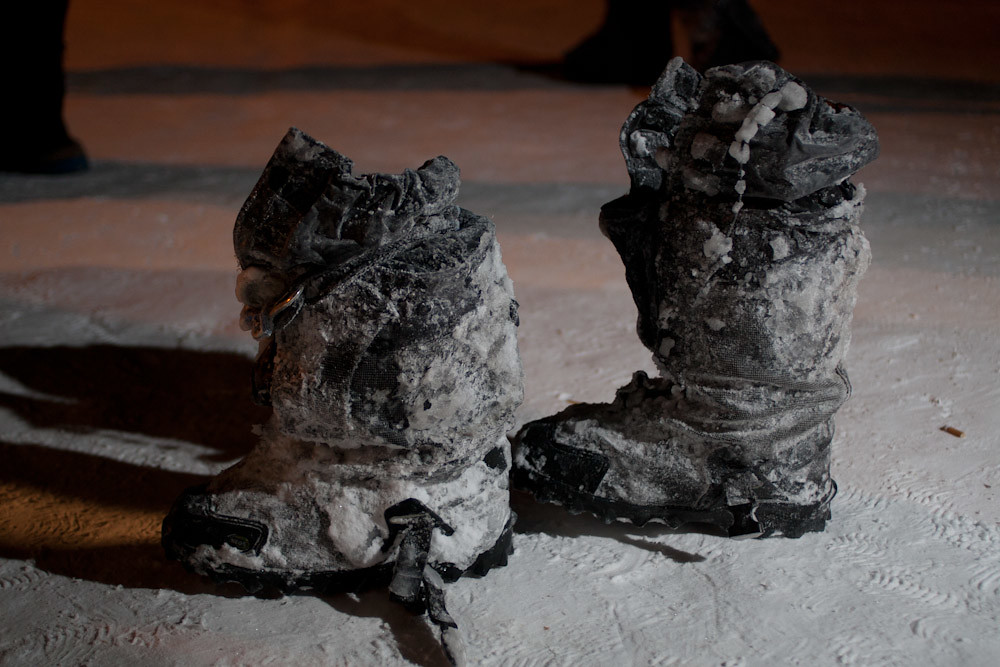Note that the data are simply a JSON-ized version of the data shown at the SPOT API page.
I've put the code up on Github, as well. The caveats from the previous API post still apply - don't write a tracker that runs in the browser, don't write it in Javascript, don't hit the servers (either SPOT or Google Maps) more often than absolutely necessary, etc. Be sensitive to privacy issues, and what you're revealing when you write a tracker that's publicly available.
Let me know if you identify errors in the code or if you have questions! Most of all, have some fun with this.
<!DOCTYPE html> <html> <head> <title>My Wee Tracker</title> <meta name="viewport" content="initial-scale=1.0, user-scalable=no" /> <style type="text/css"> html { height: 100% } body { height: 100%; margin: 0; padding: 0 } #map_canvas { height: 100% } </style> <script type="text/javascript" src="http://maps.googleapis.com/maps/api/js?key=AIzaSyBFoJjPtS9vWXIENOa-egd0XFFnnQbfTIk&sensor=false&libraries=geometry"> </script> <script type="text/javascript"> //<![CDATA[ // convert text from the tracker data to a JSON object and // pull out deeply-nested data elements function extract_gps_data(trackerdata) { var points = new Array(); var track_data = JSON.parse(trackerdata); var messages = track_data['response']['feedMessageResponse']['messages']['message']; for (i = 0 ; i < track_data['response']['feedMessageResponse']['count'] ; i++) { var timestamp = messages[i]['dateTime']; var latitude = messages[i]['latitude']; var longitude = messages[i]['longitude']; var point_holder = new point(timestamp, latitude, longitude); points.push(point_holder); } return points; } // "point" is an object we use to hold the data we'll be putting on the map function point(timestamp, latitude, longitude) { this.timestamp = timestamp; this.latitude = latitude; this.longitude = longitude; } function get_track(url) { var request = new XMLHttpRequest(); request.open("GET", url, false); request.send(); return request.response; } function makeinfobox(pointnum, thispoint, theotherpoint) { var latlnga, latlngb; var distance; var infoboxtext; var timestamp; timestamp = new Date(thispoint.timestamp); // we convert it from ISO format to something more readable infoboxtext = String(timestamp); if (pointnum > 0 && theotherpoint) { // no point calculating distance on the point latlnga = new google.maps.LatLng(thispoint.latitude, thispoint.longitude); latlngb = new google.maps.LatLng(theotherpoint.latitude, theotherpoint.longitude); distance = google.maps.geometry.spherical.computeDistanceBetween(latlnga, latlngb) / 1610; // convert to miles infoboxtext = infoboxtext + "<br />" + distance.toFixed(2) + " miles"; } return infoboxtext; } function initialize() { var points; url = "spot_track.json"; trackline = new Array(); trackerdata = get_track(url); points = extract_gps_data(trackerdata); var spot = new google.maps.LatLng(points[0].latitude, points[0].longitude); var my_options = { center: spot, zoom: 12, mapTypeId: google.maps.MapTypeId.ROADMAP }; var map = new google.maps.Map(document.getElementById("map_canvas"), my_options); for ( i = 0 ; i < points.length ; i++ ) { var contentstring = "Point " + i; var spot = new google.maps.LatLng(points[i].latitude, points[i].longitude); // here we create the text that is displayed when we click on a marker var windowtext = makeinfobox(i, points[i], points[i+1]); var marker = new google.maps.Marker( { position: spot, map: map, title: points[i].timestamp, html: windowtext } ); // instantiate the infowindow var infowindow = new google.maps.InfoWindow( { } ); // when you click on a marker, pop up an info window google.maps.event.addListener(marker, 'click', function() { infowindow.setContent(this.html); infowindow.open(map, this); }); // set up the array from which we'll draw a line connecting the readings trackline.push(spot); } // here's where we actually draw the path var trackpath = new google.maps.Polyline( { path: trackline, strokeColor: "#FF00FF", strokeWeight: 3 } ); trackpath.setMap(map); } //]]> </script> </head> <body onload="initialize()"> <div id="map_canvas" style="width:100%; height:100%"></div> </body> </html>





















